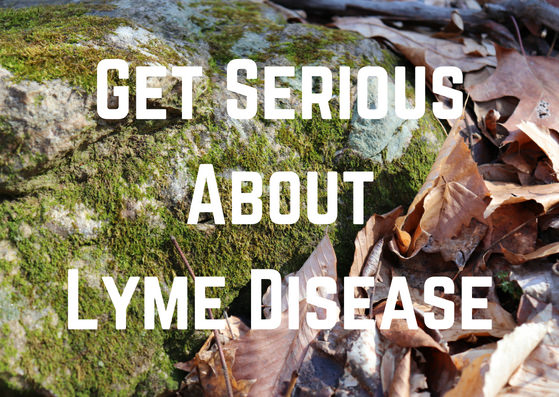Get serious about Lyme disease!
Did you know Lyme disease is increasing right in our area? This disease is transmitted by the black legged tick, commonly known as the deer tick. This tick bites rodents carrying the bacteria Borrelia Burgdorfer or Mayonii, and then attaches itself to the white-tailed deer. They are dropped or brushed off the deer into long grasses, weeds, or leaves and brush. They easily attach to human and dog hair or skin. You are at risk when you spend time in grassy or wooded areas.
You may not get Lyme disease every time you are bit by a tick but try to save the tick and show it to a medical person. Watch for these symptoms:
*A small red bump occurs after a bite, which resolves in a few days. This happens after any insect bite and may not lead to Lyme disease.
*In 3 to 30 days a red rash might appear that sometimes has a clear spot in the middle, it may be circular and can expand up to 12 inches across, looking similar to a bull’s eye. This rash is not usually itchy or painful. Go to a doctor as soon as you see this rash.
*Next the victim develops flu like symptoms: fever, chills, fatigue, body aches and headaches. Get to your doctor. Early treatment avoids complications.
*After a few weeks the rash may expand or disappear, but joints become painful and swollen. Also an inflammation of the membranes around your brain may occur with temporary paralysis of facial muscles or numbness or weakness in your limbs. All of this can lead to serious heart, liver or eye problems. If you think you have been bitten or have any of these symptoms get medical help immediately.
What can you do? Avoid areas where ticks live: woods, brush or long grassy areas. Cover up if you must work or walk in these areas. Shoes, socks, long pants, long sleeves, are
recommended. Stick to trails and leash pets. Use insect repellant with 20% DEET, or add permethrin to clothes or buy permethrin treated clothes. Always check yourself for ticks. Ticks can remain on your skin without attaching for hours. Shower and rub yourself with a wash cloth after exposure. When you find a tick remove it immediately. They can be as small as a pin head or up to an eighth of an inch. Bacteria is usually not transferred unless the tick is attached for 36 to 48 hours. Don’t assume after having Lyme disease that you have immunity to this disease. You can get it over and over! There are 7 other diseases caused by ticks. Practice prevention all the time.
Pat Woerheide, RN


